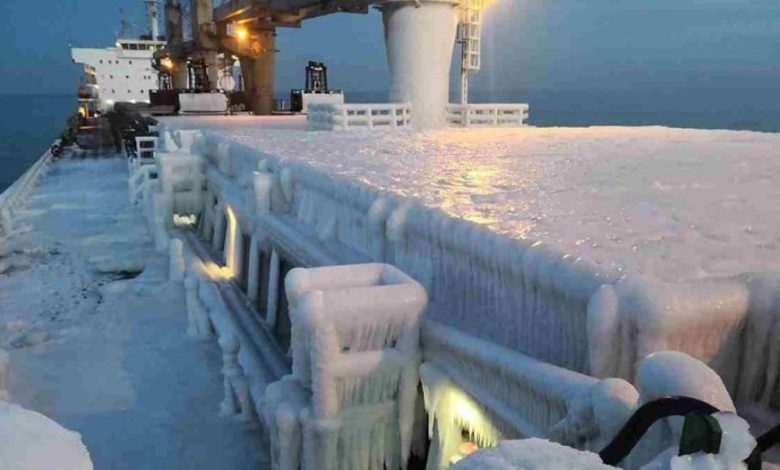Polar Vortex Drives Gas and Coal Prices to New Highs, Freight Rates Leap

By Sam Chambers
January 14, 2021 - An extraordinarily cold winter across East Asia is sending prices for coal and LNG through the roof, and sparking sensational growth in freight rates for LNG carriers and capesizes as utilities scramble to keep their customers warm.
The cold snap – widely tipped as being down to the polar vortex, a pattern of cyclone-like winds that rises in the Arctic – has seen temperatures in Beijing hit lows not seen since 1966, while Japan has endured record snowfall this winter and the Korean Peninsula has also been hit by an icier than normal December and January.
Last week, LNG carrier spot rates hit an all-time high of $200,000 a day, with one fixture at $350,000 a day as the Asian JKM LNG price soared to a record $21/MMbtu and has since leapt by more than 50%. The situation is being aggravated by congestion at the Panama Canal, where many LNG carriers are having to wait for more than a week to transit. Cape rates have also rallied since the start of the year, pushing up to $30,000 a day.

Braemar ACM noted this week that heating demand in Japan has driven power prices to record highs, prompting calls for businesses and residents to conserve power. With LNG prices soaring on scarce supplies, coal demand has rallied on the increased electricity generation, which is estimated to be up by around 8% year-on-year so far in January.
Peak electricity demand in the country is about 90% more than expected supply as of yesterday and as high as 97% in the northern Tohoku area, according to OCCTO, a Japanese organisation that coordinates and oversees power transmission in the country. The Federation of Electric Power Companies of Japan announced that electricity demand reached a decade high by Friday in seven of the 10 areas across the country.
In China, meanwhile, where blackouts have been reported in recent weeks, steam coal prices are rising to the highest level in a decade, helped in part by Beijing’s decision to ban Australian coal. This has also seen Chinese LNG demand leap.
The extreme weather is also being felt in Europe which is seeing the price of LNG jump for European clients too.
On the cape rally seen in the opening fortnight of 2021, Breakwave Advisors said in a new report that the current situation is “mainly positional tightness reflecting weather delays, a tight ballasting list (number of ships sailing back to Atlantic from Asia) and favourable weather conditions both in Australia as well as in Brazil”.
Looking at the projection for capesize only cargo miles demand, Peter Sand, chief shipping analyst at BIMCO, tweeted yesterday, “Something is boiling here.” Sand noted all other dry bulk subsectors are experiencing a normal seasonal decline from Q4, while capes jump.
The chill has also brought navigational warnings. The expansion of sea ice at Chinese ports in the north of Bohai Bay is making berthing and discharge difficult.
Last weekend, the marine safety bureau in northern Hebei sent several tugboats to the aid of vessels, such as LNG tanker Clean Planet and coal carrier Agia Eirini Force, trapped in sea ice that was 1 m thick, to help bring them to Caofeidian and Huanghua ports.

